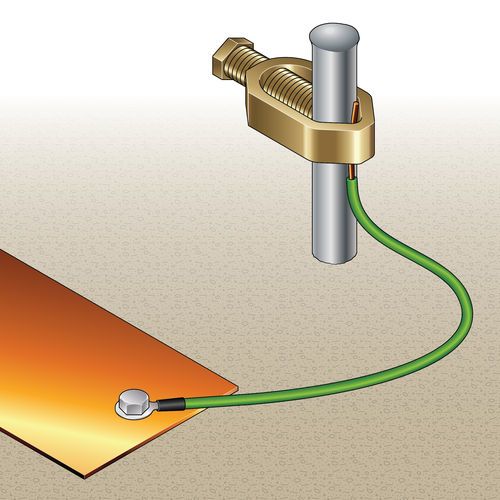1. Why is ESD grounding necessary in electronics manufacturing?
-
Electronic components are sensitive to ESD: A static discharge of just a few dozen volts can damage the MOSFET gate oxide layer or destroy semiconductor structures.
-
Preventing accidental discharges: Grounding helps “dissipate” static charges accumulated on personnel or equipment to the grounding system, avoiding sudden discharges into products.
-
Ensuring compliance with international standards: Standards such as ANSI/ESD S20.20 and IEC 61340 require properly installed grounding systems throughout the EPA to ensure output quality.
-
Reducing defects – increasing productivity: Effective ESD control reduces failure rates, improves product reliability, and delivers economic benefits for the factory.

2. How to Set Up a Standard ESD-Protected Work Area
2.1. Designing the Main Grounding System (Earth Bonding System)
-
Use a busbar or low-resistance copper conductor connected to the factory’s main grounding system.
-
All anti-static devices must be connected to a Common Ground Point to avoid potential differences.
2.2. Standardizing the Workbench (EPA Station)
| Equipment | Technical Requirement (ANSI/ESD S20.20) |
|---|---|
| ESD Table Mat | Surface resistance: 10^6 – 10^9 Ω |
| Ground Cord for Mat | Must connect to ESD Ground point |
| ESD Wrist Strap | Resistance < 3.5 × 10^7 Ω when worn |
| Wrist Strap Ground Cord | Built-in 1 MΩ safety resistor |
| ESD Footwear / Floor Mat | Total resistance (person-to-floor) < 10^9 Ω |
| Ionizer (if needed) | Neutralizes ions when handling sensitive components |
>>See more: Low voltage and high frequency AC type ionizing air bar
2.3. Operation and Compliance Guidelines
-
Operators must wear an ESD wrist strap and connect it to the correct ground point before handling components.
-
The EPA floor must be equipped with a grounded ESD floor mat.
-
Check the resistance of wrist straps and ESD footwear daily using an ESD tester.
-
Install ionizers in the work area to neutralize airborne ions.
Conclusion
ESD grounding is the first line of defense in protecting electronic components from electrostatic discharge damage.
Designing and operating an EPA in full compliance with ANSI/ESD S20.20 helps reduce defects, improve quality, and strengthen the company’s reputation.


